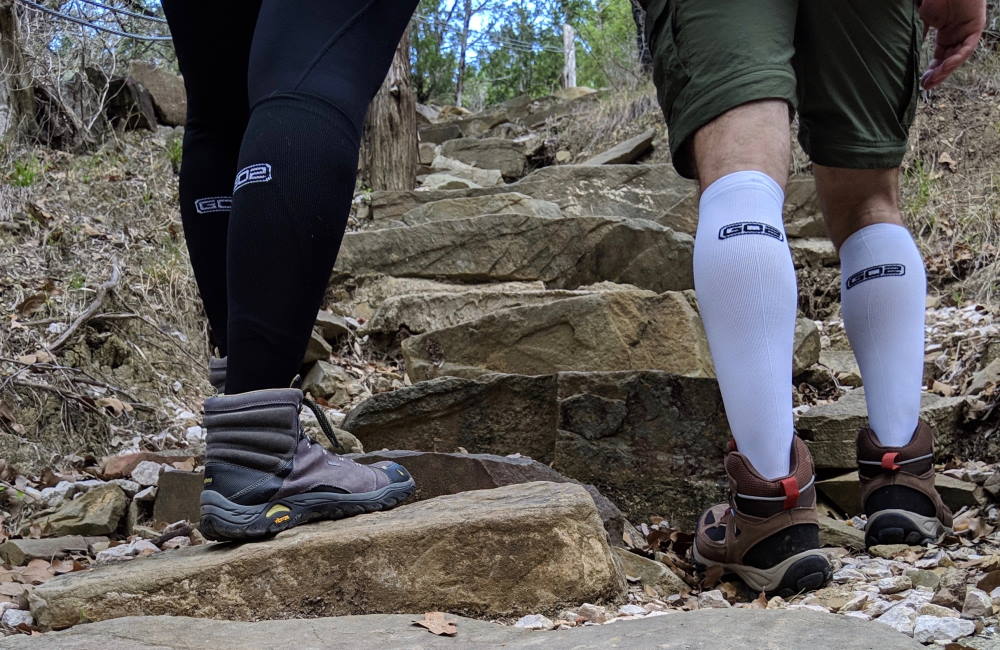
What Are Compression Socks?

Compression socks come in many styles, but the bottom line with each is that they help prevent and better manage health issues related to blood circulation. Compression socks consist of material that gently squeezes the leg, improving blood flow, lessening pain, preventing varicose veins and even helping prevent blood clots.
The socks come in many different shapes and sizes. People can select the socks with the compression level that works best for their situation. Compression socks come in stockings, pants, knee socks and ankle socks.
Doctors may prescribe compression socks in some cases. But increasingly, people have turned to using compression socks on their own because of the many health benefits. They especially have benefits for those who have jobs that require them to stand or sit for long periods of time, those who work out, athletes and those who experience leg or foot pain.
How Compression Socks Work
Compression socks improve blood flow. By gently squeezing the leg and foot, they allow arteries to relax and pump more oxygenated blood. They also provide pressure that helps veins more easily pump blood back to the heart, keeping blood from pooling in the legs or feet. In doing so, the socks can lessen pain and swelling in the legs and lower the chances of developing a blood clot. They also can help prevent varicose and spider veins.
Types of Compression Socks
Compression socks come in different sizes and many different fashion styles, from plain black to checkers, strips and even holiday styles. For those new to compression socks, the key is first finding the type of sock you want. The next step involves choosing the right level of compression for your body.
You have many choices in this area, divided into the following categories.
Mild compression. These work well for daily wear, minor swelling, tired legs (often from standing for long periods of time at work) and for those who are traveling, which may force you to sit for long periods of time. Pregnant women often choose mild socks to prevent varicose and spider veins.
Firm compression. This higher level treats those who may already experience swelling or varicose veins. This level also is used after surgery to prevent varicose or spider veins. The firm level also is recommended for blood clots, lymphedema and severe swelling. Some also use the firm level during and after workouts. Medical professionals who work long shifts on their feet also often choose the firm level.
Plantar Fasciitis socks. Also called ankle sleeves, these socks help protect the foot from plantar fasciitis pain, which involves inflammation of the tissue that connects the heel bone to toes.
Who Uses Compression Socks?
Compression socks work well for those who either stand or sit a lot on the job. That’s why they are popular with both nurses and other medical professionals as well as with airplane pilots. Others who often use compression socks include:
- People who have a circulation problem or who are at risk of developing one, including blood clots, varicose veins and diabetes
- Post-surgery patients
- Those with conditions that make moving around difficult
- Athletes
- Those who work out regularly
- Pregnant women
Compression socks offer a way to improve your health by increasing good blood flow to your legs and feet. Approved by (and often used by) medical professionals, they offer a safe and convenient way for anyone to take a step toward improving their health.
